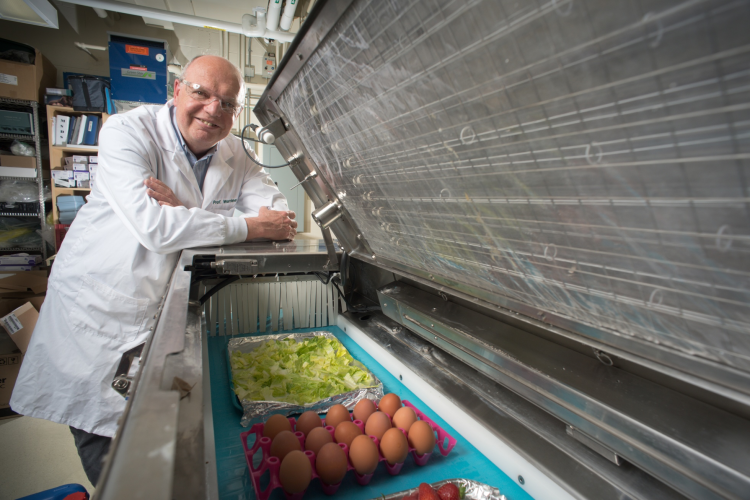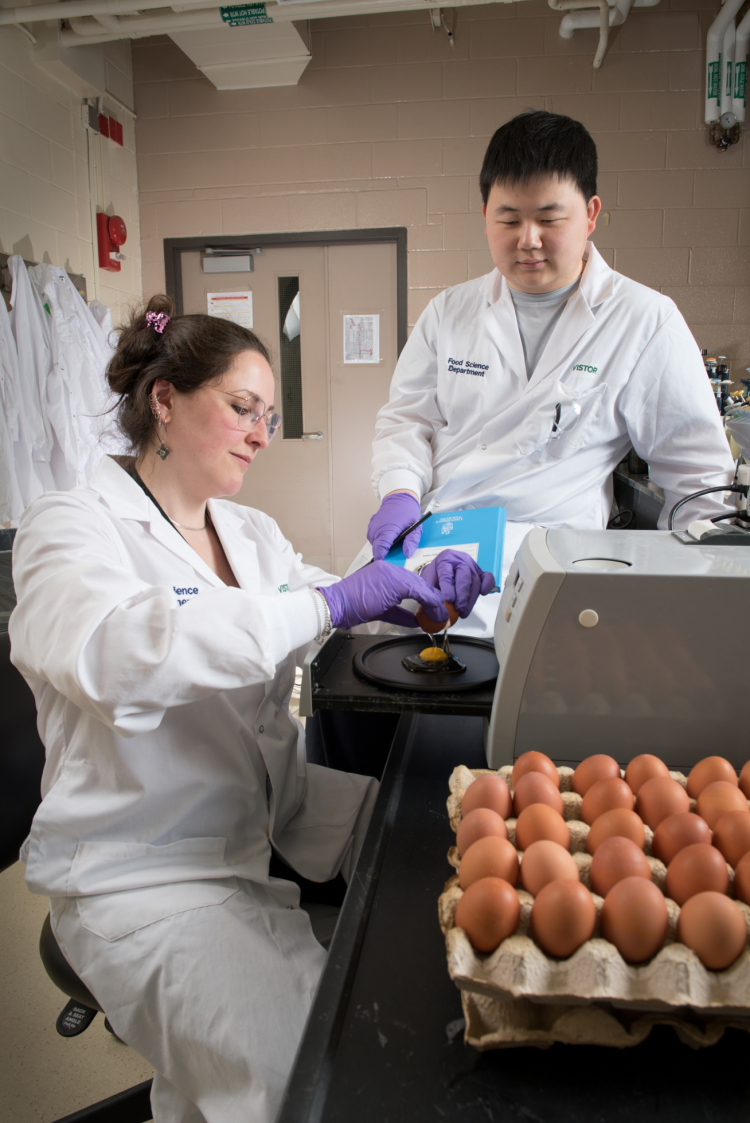Ten years ago, Dr. Keith Warriner saved candy apples.
In 2015, an outbreak of Listeria was rippling through caramel apples in California, sparking massive recalls amid dozens of infections, hospitalizations and several deaths.
"No retailer ever wanted to sell candy apples again," recalls Warriner, a professor of food safety at the University of Guelph's Ontario Agricultural College.
But Paul Moyer, an Ontario apple grower, had already invested millions into his candy apple business. He remembers waking up Christmas morning and seeing his apples on CNN: "Don't buy these," said the news banners. "They'll kill you."
Facing sure losses, Moyer turned to the award-winning food scientist for help.
Warriner offered a technology he imagined in 2002 - a prototype of hydrogen peroxide, UV light and ozone. When combined, these ingredients create hydroxyl radicals, energetic particles that break apart carbon chains and destroy pathogens in mere moments.
And unlike conventional solutions - chemical washing, pesticides or electrolyzed water - the technology leaves no toxins behind.
"It's very clean," Warriner says. "It does its job, then it dissipates into water vapour and oxygen."
The solution he had been developing for 15 years - known as gas-phase hydroxyl radical technology - was soon greenlit in Moyer's apple factories.
Ultimately, this would save Moyer from devastating financial losses. It would transform the apples' 14-day shelf-life into 35 days, allowing them to be sold in California, Texas, Florida and beyond. Sales were boosted tenfold.
"Canada went from being an importer of candy apples to an exporter, solely through Moyers Apples and the U of G technology," says Denise VanderVeen, director of business development in Clean Works Technology, Moyer's company that partly owns the patent of Warriner's tech.
"Paul Moyer decided to make a standalone company to sell this technology. And so, in 2017, Clean Works came to fruition. The rest is history."

Dr. Keith Warriner with his hydroxyl radical technology
U of G huge key to our success': Food tech revolutionizing food safety
Today, Warriner and his food science students research ways to improve the technology, to ensure it is effectively working on food products and to develop versions that might work on new commodities, like eggs, frozen foods, leafy greens and even medical equipment.
Warriner's lab is like a "training funnel" for Clean Works' R&D department, VanderVeen says, as U of G students develop high-quality microbiological lab skills.
Working with Vineland Research and Innovation Centre and the University of Delaware, Warriner and his students' research into this technology and its potential role in protecting homegrown food has been funded for more than 10 years by the Ontario Agri-Food Innovation Alliance, a collaboration between U of G, the Government of Ontario and its agency Agricultural Research and Innovation Ontario.
"I can't say this enough," VanderVeen says. "The knowledge that the Department of Food Science at U of G has brought us is without a doubt a huge key to our success."

When hydrogen peroxide, UV light and ozone combine, these ingredients create hydroxyl radicals, energetic particles that destroy pathogens in mere moments.
Does what no others can': Tech validated by hundreds of studies
More than 200 studies now validate the tech's safety and efficacy. It has won several awards, including U of G's Innovation of the Year, IAFP Innovation of the Year and the Premier's Awards for Agri-Food Innovation Excellence, amongst others.
"We can do what no others can," Warriner says.

U of G researchers continually develop ways to improve the technology
In less than 30 seconds, the technology kills 99.99 per cent of food pathogens, such as E. coli, Salmonella, norovirus and more. It can decontaminate 100,000 pounds of produce per hour. It does not use water; it is sustainable. It works on fruits, vegetables and raw pet food, as well as items not suited to a typical washing treatment, like nuts and flour, and frozen goods, which will defrost during a conventional wash.
It is mobile, able to attach harvesters on the field in order to decontaminate low-growing crops, like spinach or broccoli, without the use of pesticides. It is also an easy fit for indoor farms, in which crops in controlled growing environments are sensitive to quality issues when typical water-based cleaning methods are used.
Recently, it underwent testing to treat wine grapes affected by powdery mildew, a disease resistant to fungicides that is decimating crops in the Niagara region. That feat alone is saving growers tens of thousands of dollars a year.
"Pesticides are preventative, not curative," VanderVeen explains. "But our technology is curative as it actually kills the moulds, breaking down the RNA and DNA of spores. Powdery mildew can't become resistant to this tech."
The technology works even on non-food items, like personal protective equipment (PPE).
During the COVID-19 pandemic, when PPE supplies were running dangerously low, Warriner's technology helped to sanitize and recycle up to 800 masks an hour.
"We could process masks within 30 seconds, whereas in the U.S., they were taking three hours," he says.
The technology could also be one more tool in the fight against avian flu, a capability Warriner is currently investigating.
Ready to change food safety forever
Despite the technology's proven efficiency, one of Warriner's longstanding challenges is getting people to buy in.
"No one wants to be at that meeting and say, I think we should use hydroxyl radicals,' because it means they have to change how they think."
Often Warriner has to convince people to be more proactive in food safety, a message that seems to land only during a crisis.
"The companies interested in adopting it are the ones in the midst of an outbreak," he says. "Food safety is a funny beast. You don't know it until it hits you - like life."
Still, Warriner is optimistic. Outbreak detection is improving annually and the demand for new solutions is increasing.
"Take Marie Curie: her first experiments with radiation showed how it preserves fruit and dairy products," Warriner says. "But as we know from history, it is usually 100 years after when people say, Oh yeah, they had a good point.'"










